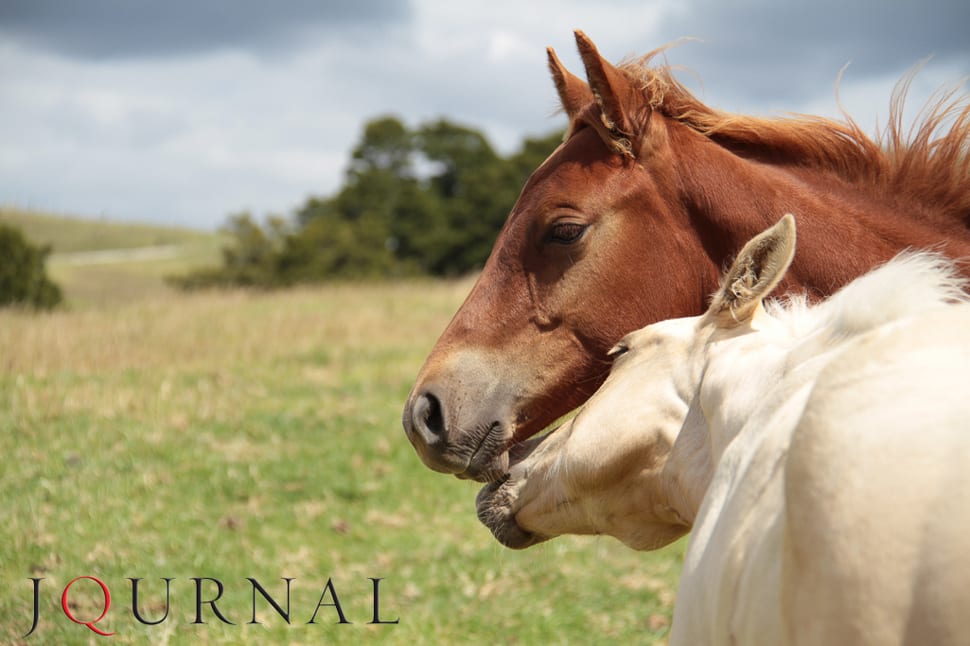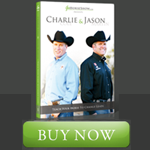A healthy foal will grow rapidly, gaining in height, weight and strength almost before your very eyes. From birth to age 2, a young horse can achieve 90 percent or more of its full adult size, sometimes putting on as many as three pounds per day.
Genetics, management and environment play significant roles in determining individual growth patterns. Through research, we also know we can influence a foal’s growth and development – for better or worse – by the nutrition we supply.
Strive for Balance
Feeding young horses is a careful balancing act. The interplay between genetics, management and environment and nutrition is complex. While we can do nothing to affect the genetics of an individual, we can affect how those genetics are ultimately expressed.
Foal nutrition is just one of many important aspects of raising an equine baby. Learn more about breeding American Quarter Horses and raising healthy foals in AQHA’s Equine Breeding Techniques and Foal Health Tips report.
The nutritional start a foal gets can have a profound effect on its health and soundness for the rest of its life. We can accelerate growth if we choose. However, research suggests that a balanced dietary approach, which supports no more than a moderate growth rate, is less likely to cause developmental problems.
Some conditions that have been associated with rapid growth rates include:
• Contracted tendons
• Epiphysitis
• Angular limb deformities
• Osteochondrosis
The Foal’s Changing Diet
As early as 10-14 days of age, a foal may begin to show an interest in feed. By nibbling and sampling, the youngster learns to eat solid food. Its digestive system quickly adapts to the dietary changes. It is now recognized that coprophagy (eating of feces) is normal in the form and may lead to foal heat diarrhea as the intestinal microflora changes. This diarrhea was previously thought to result from hormonal changes in the milk but has been observed to occur with orphaned foals that have no exposure to maternal hormones.
At 8-10 weeks of age, mare’s milk alone may not adequately meet the foal’s nutritional needs, depending on the desired growth rate an owner wants for a foal. In order to achieve a more rapid rate of gain, high-quality grains and forage should be added to the foal’s diet.
It is essential the ration be properly balanced for vitamins and minerals. Deficits, excesses or imbalances of calcium, phosphorous, copper, zinc, selenium and vitamin E are of particular concern in the growing foal. Improper amounts or ratios can lead to skeletal problems.
Foal Feeding Guidelines
As the foal’s dietary requirements shift from milk to feed and forage, your role in providing the proper nutrition gains in importance. Here are some guidelines to help you meet the young horse’s needs:
1. Provide high-quality roughage (hay and pasture) free choice.
2. Supplement with a high-quality, properly-balanced grain concentrate at weaning, or earlier if more rapid rates of gain are desired.
3. Start by feeding 1 percent of a foal’s body weight per day (i.e. 1 pound of feed for each 100 pounds of body weight) or one pound of feed per month of age.
4. Weigh and adjust the feed ration based on growth and fitness. A weight tape can help you approximate a foal’s size.
5. Foals have small stomachs, so divide the daily ration into two to three feedings.
6. Make sure feeds contain the proper balance of vitamins, minerals, energy and protein.
7. Use a creep feeder or feed the foal separately from the mare so it can eat its own ration. Try to avoid group creep-feeding situations.
8. Remove uneaten portions between feedings.
9. Do not overfeed. Overweight foals are more prone to developmental orthopedic disease (DOD).
10. Provide unlimited fresh, clean water.
11. Provide opportunity for abundant exercise.
Weaning
Foals are commonly weaned at 4-6 months of age. Beginning about the third month, the mare’s milk supply gradually declines and a natural weaning process begins.
Raising a healthy and happy American Quarter Horse is hard work, but definitely worth it. Find more tips on successfully raising foals in AQHA’s Equine Breeding Techniques and Foal Health Tips report.
To prepare the foal for complete weaning, its ration should be increased over a two- to three-week period to make up for the nutrients being lost in the diminishing milk supply. The mare’s grain should be reduced and/or gradually eliminated to further limit milk production.
Once the foal is no longer nursing, a 500- to 600-pound weanling should be eating between 2-3 percent of its body weight in feed and forage a day.
Sustaining Growth
Weanlings and yearlings continue to build bone and muscle mass at a remarkable rate. From weaning to 2 years of age, the horse may nearly double its weight gain.
Weanlings and yearlings benefit from a diet containing 14-16 percent protein. They also require readily available sources of energy to meet the demands of growth and activity. The percent of concentrates or roughage a diet may contain depends on the desired growth rate. However, the diet should never contain less than 30 percent as roughage – measured by weight.
A good rule of thumb is to provide 60-70 percent of the ration as concentrates and 30-40 percent of the ration as roughage – measured by weight. The diet must also provide ample fiber to keep the digestive tract functioning properly. Some of the new complete feeds have the ration already balanced.
Weight-gain and development taper off as the horse matures. As growth slows, you will need to adjust the ration to approximately 1.5-2 percent of the yearling’s body weight. The grain-to-roughage ration should also be adjusted so that by the time the horse is a 2-year-old, half of its daily diet (by weight) is coming from grain sources and the other half from hay and pasture. Breed type, maturity, desired growth rate and condition, and level of activity will affect the horse’s exact nutritional requirements.
Total Care and Management
Work with your equine practitioner to develop a total health care plan for your foals, weanlings and yearlings. A regular deworming, vaccination and examination schedule is essential to ensure that your foal is getting the care it needs.
Remember, vaccination and deworming regimens may vary depending on regional factors and disease risks. Consult your equine practitioner for exact recommendations.
Here are some other management tips:
• Unless there is a medical concern, provide youngsters free-choice exercise daily. The less time foals are confined to stalls, the better. Avoid confining foals for more than 10 hours per day.
• Use longing, round pen or treadmill work judiciously. Excessive forced exercise can strain joints and limbs.
• Never exercise a foal to the point of fatigue. If you observe a foal’s limbs to be shaking or weak, or if the mare cannot keep up with the adult horses in a herd, the mare and foal need to be confined until the foal is rested.
• Keep your youngster’s feet properly trimmed to foster proper bone development.
• Provide a clean, safe environment with adequate shelter from the elements.
• Check the horse’s surroundings and eliminate any potential hazards, such as loose boards, nails, wire fencing or equipment.
The reward for providing excellent nutrition, conscientious care and a safe environment will be a healthy foal that grows into a sound and useful horse.









